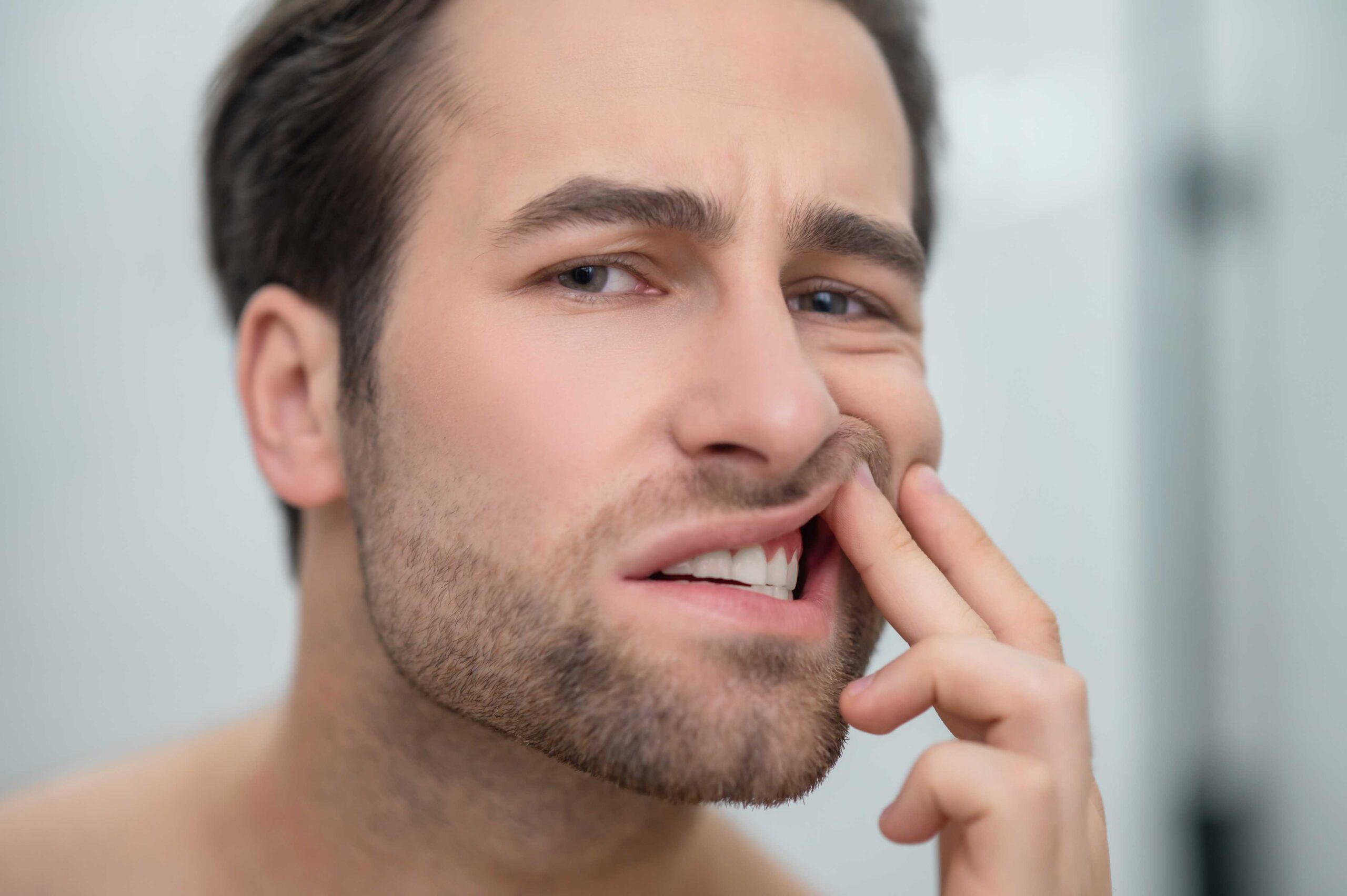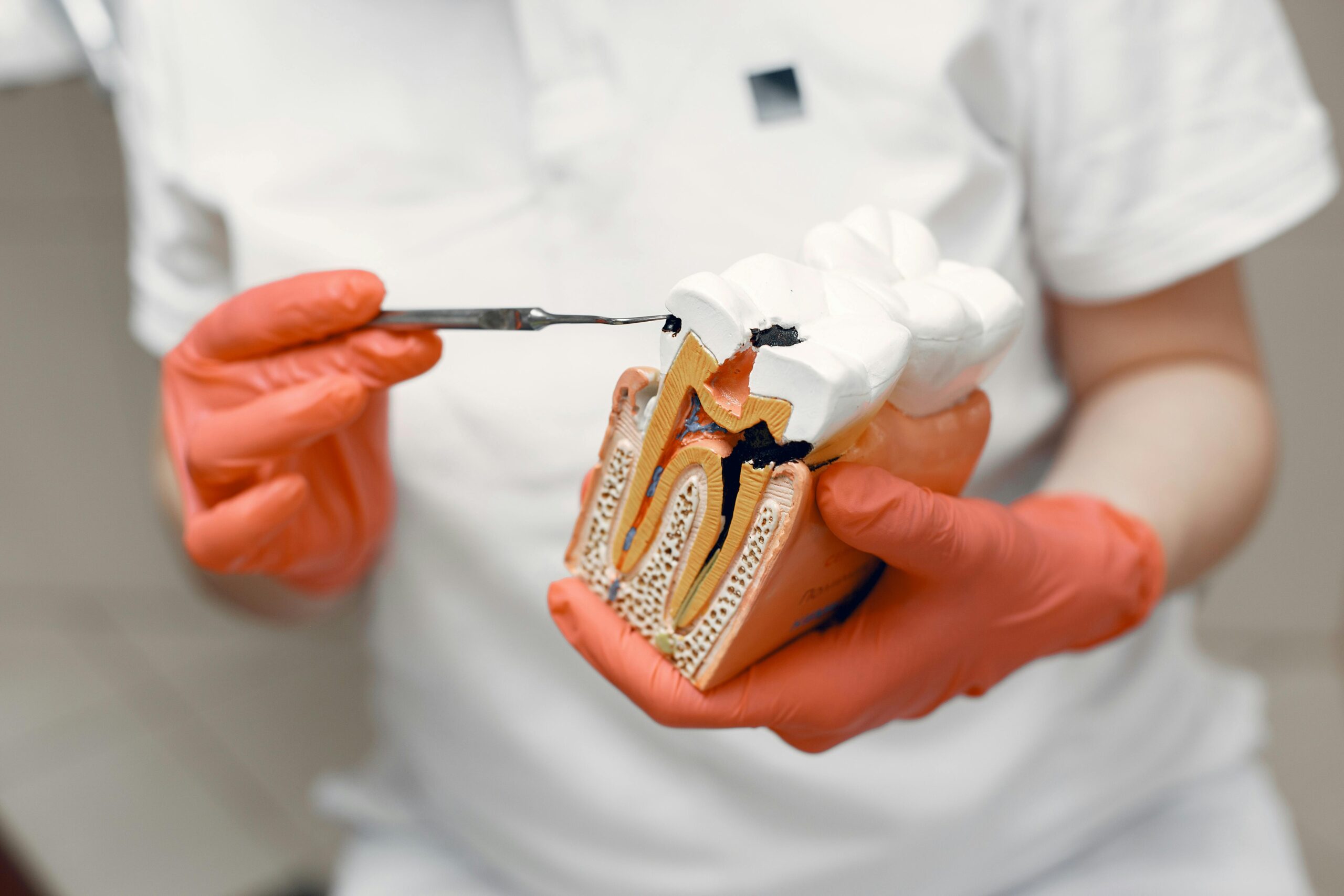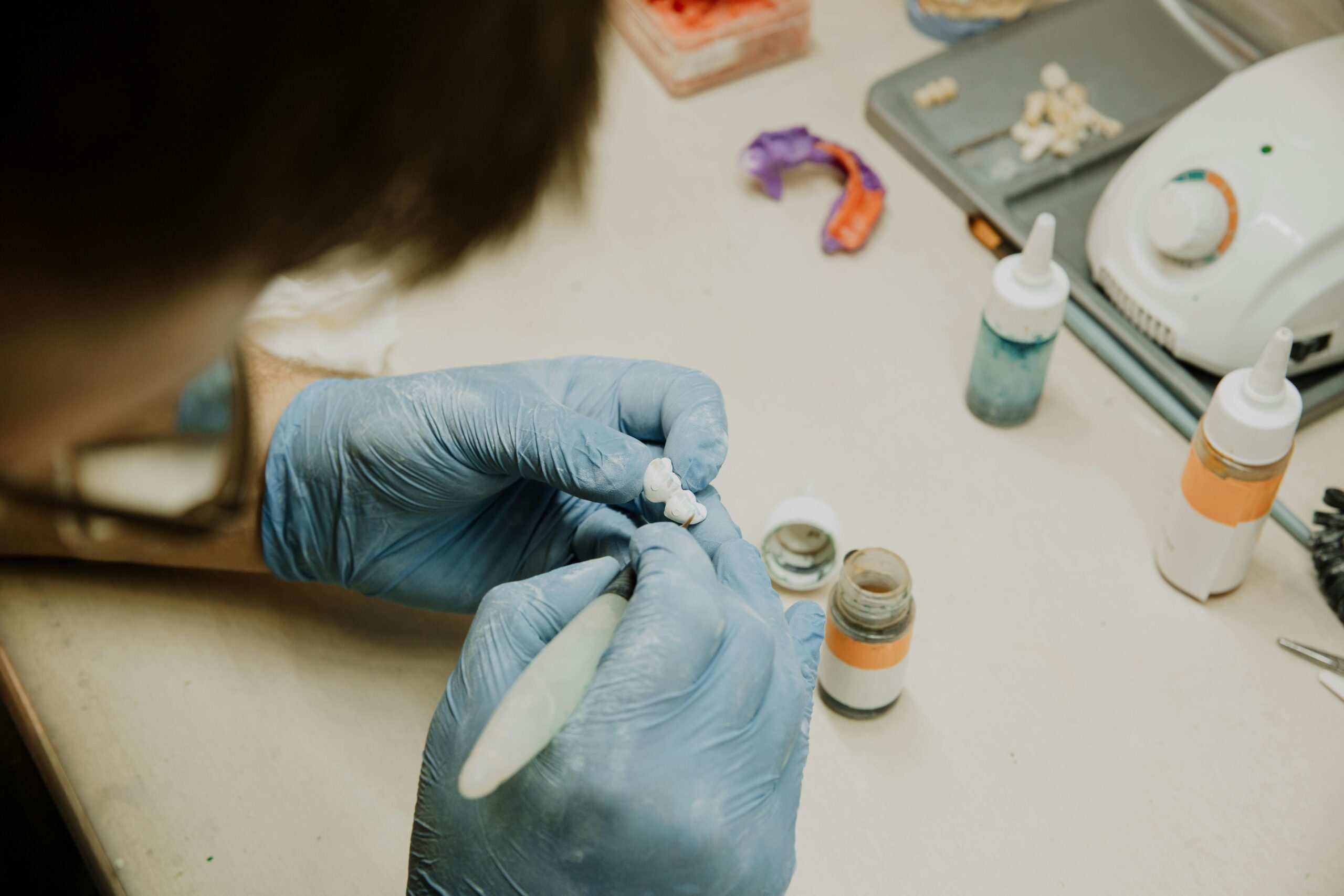Have you ever noticed a pink or red in the sink after brushing your teeth? Bleeding gums can be jarring but it’s more common than you might thin
Bleeding Gums When You Brush? Here’s What It Means – And What to Do About It
Have you ever noticed a pink or red in the sink after brushing your teeth? Bleeding gums can be jarring but it’s more common than you might think. Often, it’s your gums sending a warning signal: something’s not quite right in your dental hygiene routine or overall gum health. This blog post will take you through what bleeding gums mean, how you can deal with them, and how important dental health check-ups are for keeping a healthy smile.
What Bleeding Gums Might Be Telling You
1. Early Gum Disease (Gingivitis)
Bleeding when brushing is most often a sign of gingivitis which is the first stage of gum disease. Bleeding occurs when plaque, a sticky film of bacteria, accumulates along the gum line. If the plaque is not removed through brushing and flossing, the gums will become inflamed and swelling of the gums as well as bleeding can occur even when brushing very lightly.
2. Aggressive Brushing or Using a Hard-Bristle Toothbrush
Ironically, trying too hard can backfire! Brushing too hard, or using a hard-bristled toothbrush, can damage gum tissue and cause irritation and bleeding. Always opt for a soft-bristle brush (Medium), and let the bristles and toothpaste do the work not muscle power.
3. Poor Dental Hygiene Routine
Skipping flossing or only brushing once a day can allow plaque to creep into the pockets beneath your gums. This causes inflammation and bleeding. A consistent routine thorough brushing twice daily and daily flossing can help prevent this.
4. Vitamin Deficiencies and Illness
Sometimes, bleeding gums are not solely due to oral hygiene. Deficiencies in vitamins C and K, diabetes or hormonal changes during pregnancy can cause bleeding gums.
Also Read: Growing Smiles: A Parent’s Guide to Building Lifelong Dental Habits in Guiseley Families
5. Medications and Health Conditions
Certain medications, such as blood thinners, or health issues affecting immunity may lead to increased sensitivity of your gums. If you maintain good dental hygiene but still experience bleeding gums, consider discussing the medications or medical conditions that might be increasing the sensitivity of your gums with your healthcare provider.
Steps to Take When Your Gums Bleed

Step 1: Don’t Ignore It
Bleeding gums are not normal, even minor bleeding is your body’s way of saying something’s amiss with your gum health. Taking prompt action ensures problems stay manageable.
Step 2: Upgrade Your Routine
- Brush with a soft-bristle toothbrush, ideally with a small head to reach back molars comfortably.
- Use gentle, circular strokes, holding the toothbrush at a 45-degree angle to your gum line.
- Brush at least two times a day with a fluoride toothpaste.
- Floss daily and gently guide the floss below your gum line to remove plaque.
- Consider utilizing an antiseptic mouthwash to aid in the prevention of bacteria.
Step 3: Address Nutritional and Lifestyle Factors
- Eat a balanced diet rich in vitamin C, leafy greens, citrus, and bell peppers to support gum health.
- Stay hydrated and avoid tobacco use, which impairs gum healing.
- If you are pregnant or managing chronic conditions like diabetes, talk to both your GP and dentist about how these may affect your dental health.
Step 4: Make Time for Professional Care
Even with stellar dental hygiene, only regular dental assessments can catch deeper issues early. Schedule a dental health checkup to thoroughly evaluate your gums and teeth.
Why Regular Dental Examinations Matter
Early Detection & Prevention
Routine dental health examinations allow your dentist to assess your gum health and spot issues like gingivitis before they progress to serious periodontal disease. It’s a much better situation to reverse early gum inflammation than to treat advanced pockets or bone loss.
Professional Cleaning (Scaling and Polishing)
Plaque and tartar that hide under the gum line can’t always be removed by home brushing. A pro cleaning (scaling and polishing) during your check-up can eliminate these stubborn deposits and help gums reattach firmly to your teeth.
Holistic Oral Health Evaluation
Beyond the gums, your dentist will screen for cavities, examine your bite, inspect for oral cancer, and ensure your overall mouth lips, tongue, jaw joints are in good health.
Treatment Planning & Advice
If bleeding gums are a sign of something more serious than gingivitis, your dentist will work with you to develop an individualized dental health treatment plan that may include a deeper cleaning, specifically formulated toothpaste, additional help with interdental cleaning, , and/or a protective mouth guard for teeth grinding.
Also Read: How Much Does Composite Bonding Cost in Leeds in 2025?
Understanding the Cost of Dental Health Examination
You’re probably wondering: what’s the cost of a dental health examination? Here’s what to expect:
- General examination prices in Guiseley can vary based on the clinic, and if it includes x‑rays or cleaning. Assuming for the sake of this exercise that there was a sensible base price for assessment from a variety of practices; If we think that practitioners can offer assessments for something close to a reasonable base price. For a comprehensive examination plus scale and polish, the cost may be a bit higher. It’s best to call ahead or check local pricing.
- At One Two Three Dental, we believe in transparent, fair pricing. Contact our Guiseley practice to get a clear breakdown of the cost tailored to your needs.
Finding the Right Provider: Dental Check-Ups Near Me (Guiseley)
If you are searching for reliable dental check-ups near me, here’s how to narrow your options in Guiseley:
- Look for clinics offering both routine dental examination Guiseley and general dental check-up Guiseley services.
- Ensure they emphasise dental hygiene and gum health, including patient education and preventative care.
- Check whether they offer modern tools, digital x‑rays, intraoral cameras for thorough and comfortable examinations.
- Read reviews: You want a practitioner who listens, explains procedures clearly, and supports you in maintaining long‑term oral health.
When to Contact a Dentist Immediately
If your gums are persistently bleeding despite proper brushing, or if you notice other symptoms like:
- Red, swollen, or tender gums
- Receding gum line or teeth appearing longer
- Bad breath or pus between gums and teeth
- Loose teeth or changes in bite or chewing
…these can signal periodontitis, an advanced form of gum disease. It’s time to schedule a dental health checkup promptly to prevent irreversible damage.
Also Read: Why Regular Dental Check-Ups Matter: Expert Advice for New Patients
Summary: What to Do Now
| Action | Purpose |
| Brush gently twice daily with medium bristles | Reduces irritation |
| Floss daily/or Tepe – Interdental cleaning | Keeps plaque from hiding under gums |
| Use antiseptic mouthwash (optional) | Controls bacteria |
| Eat a vitamin-rich diet, stay hydrated, avoid tobacco | Supports gum resilience |
| Schedule a professional dental health checkup | Essential for diagnosis and treatment |
| Ask about costs upfront | Prevents surprises |
| Visit a trusted clinic offering dental check‑ups near me Guiseley | Convenient and community‑centered care |
Final Thoughts
Bleeding gums might feel alarming, but for most, it’s an early warning sign we can act upon. With mindful dental hygiene and gum health, timely treatment, and routine exams, healthy gums and that confident smile are within your grasp.
If you have noticed bleeding when brushing, don’t wait until your gums are talking, and they deserve your attention.
Ready to Take Action?
At One Two Three Dental, we prioritise preventive care, gentle examinations and full disclosure. Whether you are due for a regular check-up, or just need advice to keep your gums healthy, we exist to help with that.
Book your appointment today at our Guiseley practice, and take a bold step toward long-term dental health before your gums decide to scare you again.







